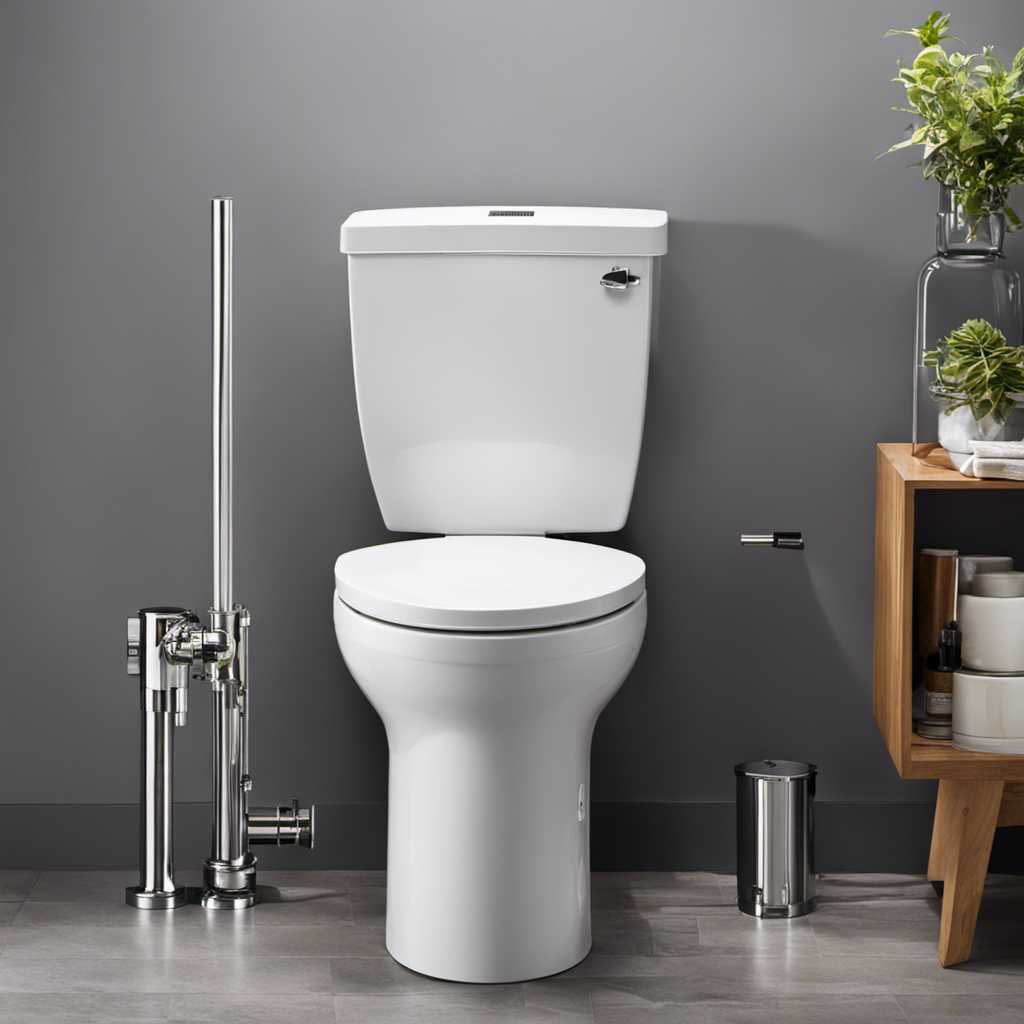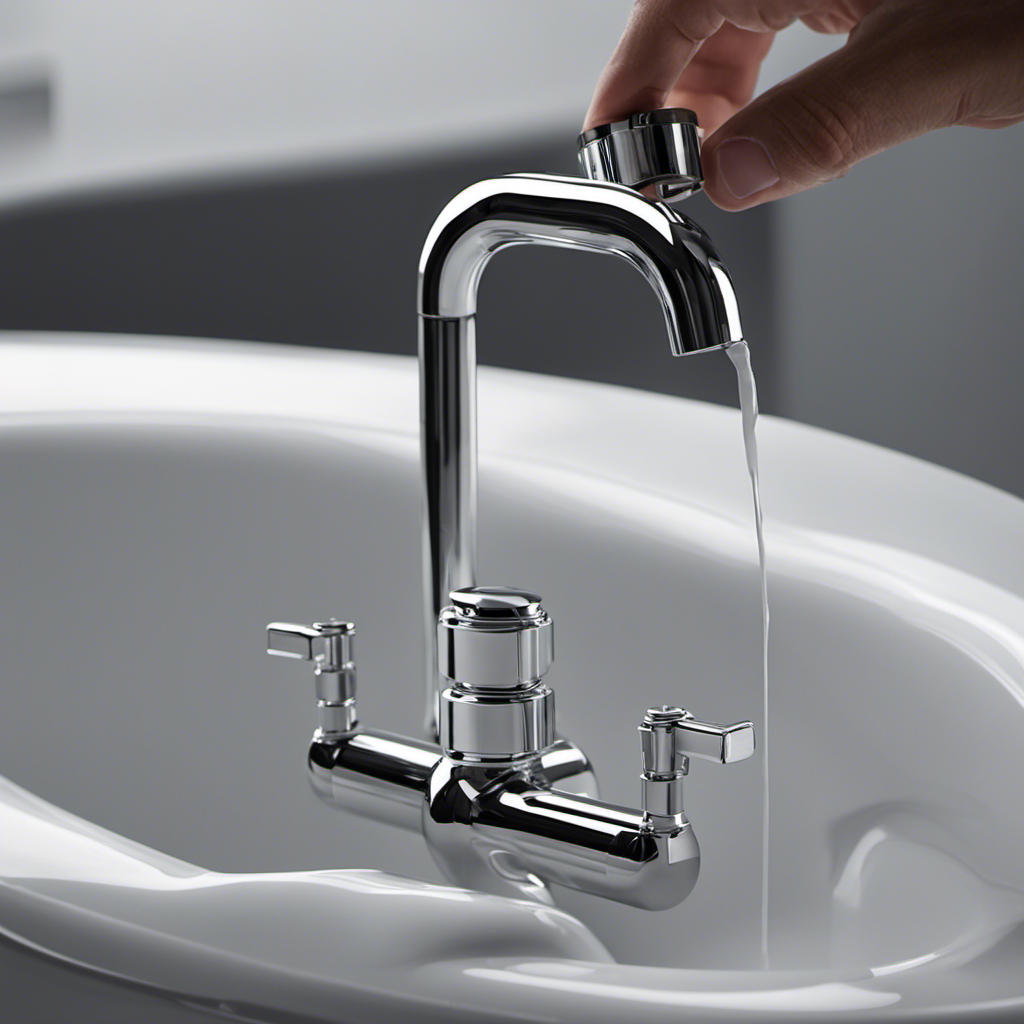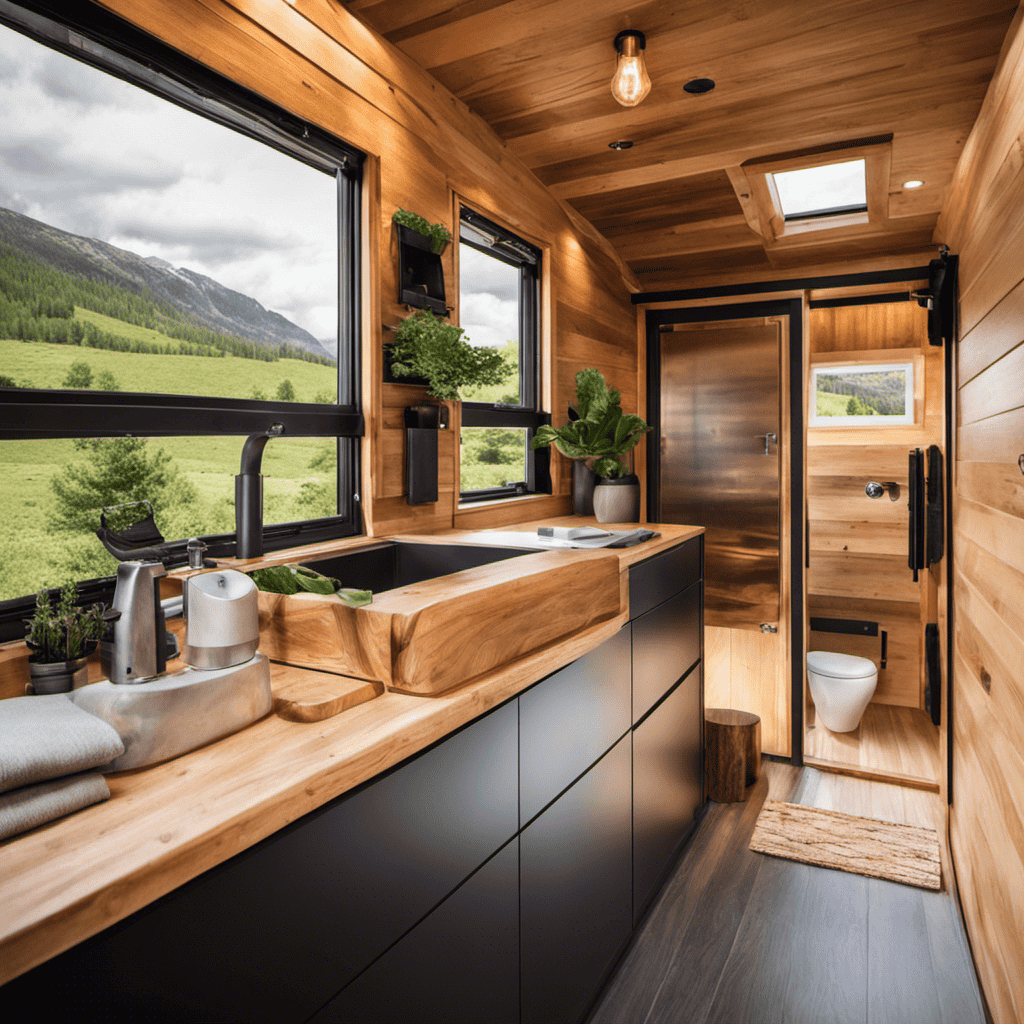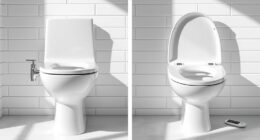So, you’re curious about how an RV toilet works? Well, let me enlighten you.
This marvel of engineering may seem like a simple necessity, but there’s actually a lot going on behind the scenes. From the flush mechanism to the various types of toilet systems, I’ll guide you through it all.
Plus, I’ll share installation and maintenance tips, as well as how to properly dispose of waste.
Get ready to dive into the fascinating world of RV toilets!
Key Takeaways
- RV toilets use a gravity flush system and conserve water to prevent odors.
- Water flow control is important for efficient flushing and proper sanitation.
- There are different waste disposal methods for RV toilets, including black water tanks, composting toilets, and portable waste tanks.
- Regular cleaning and maintenance, including using chemical additives and choosing the right cleaning products, are essential for keeping the RV toilet fresh and hygienic.
The Basics of RV Toilets
To understand the basics of RV toilets, you need to know how they work.
RV toilets are designed to function in a way that conserves water and prevents odors. They operate using a gravity flush system, which means that when you press the flush lever, water from the onboard freshwater tank is released into the toilet bowl, creating a swirling motion that helps to remove waste.
The waste is then deposited into a holding tank located beneath the toilet.
To ensure proper functioning and longevity of your RV toilet, regular maintenance is crucial. This includes cleaning the toilet bowl regularly, using the right toilet chemicals to break down waste and control odors, and properly maintaining the holding tank.
Understanding the Flush Mechanism
When it comes to the flush mechanism in an RV toilet, there are several key points to consider.
One important aspect is water flow control. This is crucial for efficient flushing and preventing clogs. By understanding how to control the water flow, you can ensure that waste is effectively flushed away without any blockages.
Another important consideration is the waste disposal process. It is necessary to understand how this process works to ensure proper sanitation and avoid any potential issues. By following the correct waste disposal procedures, you can maintain a clean and hygienic RV toilet.
Lastly, regular cleaning and maintenance are essential. By keeping up with cleaning and maintenance tasks, you can keep the toilet functioning smoothly and prevent any unpleasant odors or malfunctions.
Taking these key points into account will help you maintain a properly functioning and sanitary RV toilet.
Water Flow Control
You can adjust the water flow in your RV toilet by using the control knob. This control knob allows you to regulate the amount of water that enters the toilet bowl during each flush.
By adjusting the water flow, you can ensure that the toilet bowl is adequately filled without causing any overflow or waste. The water flow control is an important feature as it directly affects the flushing efficiency and cleanliness of the toilet.
It is crucial to find the right balance of water flow to effectively rinse and flush waste down the sewage system. Remember, too little water can lead to clogs, while too much water can be wasteful.
Waste Disposal Process
Finding a proper waste disposal process is essential for maintaining a clean and hygienic RV bathroom. When it comes to waste disposal techniques, there are several options available for RV owners.
The most common method is using a black water tank, which collects and stores the waste until it can be properly disposed of at a designated dump station.
To ensure an environmentally friendly approach, some RV owners opt for composting toilets. These toilets use natural processes to break down waste into compost, which can be safely disposed of or used as fertilizer.
Another alternative is a portable waste tank, which can be emptied at a dump station.
Whichever method you choose, it is important to follow proper waste disposal procedures to protect the environment and maintain a clean RV bathroom.
Cleaning and Maintenance
To keep your RV bathroom clean and hygienic, regular cleaning and maintenance are necessary. Here are three important steps to ensure the cleanliness of your RV bathroom.
-
Use chemical additives: Adding chemical additives to your RV toilet tank can help break down waste and prevent odors. Look for additives specifically designed for RV toilets, as they are formulated to work effectively in the unique environment of an RV.
-
Choose the right cleaning products: When cleaning your RV bathroom, it’s important to use products that are safe for the materials in your RV. Avoid harsh chemicals that can damage surfaces or cause discoloration. Opt for RV-specific cleaning products or gentle cleaners that are suitable for the materials in your bathroom.
-
Regularly clean and sanitize: Make it a habit to clean your RV bathroom regularly. Wipe down surfaces, clean the toilet bowl, and sanitize any areas that come into contact with waste. This will help prevent the buildup of grime and bacteria, keeping your RV bathroom fresh and hygienic.
Types of RV Toilet Systems
There are two main types of RV toilet systems: cassette toilets and composting toilets. Let’s take a closer look at each of them.
Cassette toilets are the most common type of RV toilet system. They use chemicals to break down waste and control odors. These chemicals are usually added to a separate compartment within the toilet system. When the waste tank is full, it can be easily removed and emptied at a designated dumping station. Cassette toilets are portable and can be easily moved around, making them a popular choice for RV owners.
Composting toilets, on the other hand, are a more eco-friendly option. They use natural processes to break down waste, eliminating the need for chemicals. Instead of flushing waste away, composting toilets use a combination of heat, airflow, and organic material to convert waste into compost. This compost can then be safely disposed of or used as fertilizer. Composting toilets are generally more permanent fixtures in RVs and require more maintenance and monitoring.
Here’s a table summarizing the main differences between chemical and composting toilets:
| Chemical Toilets | Composting Toilets | |
|---|---|---|
| Operation | Chemicals break down waste | Natural processes break down waste |
| Odor | Chemicals control odors | Natural processes minimize odors |
| Maintenance | Simple maintenance, regular chemical replenishment | Regular monitoring and compost management |
| Portability | Portable, easy to move around | More permanent fixtures in RVs |
| Eco-Friendly | Not as eco-friendly due to chemicals | Environmentally friendly, no chemicals used |
Installation and Maintenance Tips
Now that we have discussed the different types of RV toilet systems, let’s move on to the installation and maintenance tips. As an expert in RV toilets, I can provide you with some valuable insights on how to troubleshoot common issues and install your toilet properly. Here are some important points to keep in mind:
-
Toilet Troubleshooting:
- Check for leaks: Inspect the seals and connections for any signs of leakage.
- Address clogs: Use a plunger or a toilet auger to clear any blockages in the system.
- Monitor water level: Ensure that the water level in the bowl is adequate for proper flushing.
-
Toilet Installation Process:
- Gather necessary tools and materials: Including a wrench, sealant, and a new toilet.
- Remove the old toilet: Disconnect the water supply, unscrew the bolts, and carefully lift the toilet off the floor.
- Install the new toilet: Follow the manufacturer’s instructions for proper installation, including securing the bolts and connecting the water supply.
How to Properly Dispose of Waste
Properly disposing of waste in an RV involves following specific guidelines to prevent any environmental hazards. As an experienced RV enthusiast, I understand the importance of responsible waste management.
When it comes to waste disposal in your RV, it is crucial to be aware of prohibited items and their potential environmental impact. Firstly, it is essential to know what items are prohibited from being disposed of in your RV’s waste system. These include chemicals, medications, oils, and non-biodegradable materials. These items can harm the environment and damage your RV’s plumbing system.
To minimize the environmental impact of waste disposal, it is recommended to use designated dump stations or RV parks with proper waste management facilities. These facilities are equipped to handle waste disposal safely and efficiently.
Additionally, using environmentally friendly waste treatments, such as biodegradable toilet paper and enzyme-based waste digesters, can help break down waste and reduce the environmental impact. Regularly emptying and cleaning your RV’s waste tanks is also crucial for maintaining a healthy and odor-free system.
Troubleshooting Common RV Toilet Issues
To troubleshoot common issues with your RV toilet, start by checking the water supply and ensuring it’s adequately connected.
Here are three common problems that RV owners encounter with their toilets and how to address them:
-
Toilet seal problems: If you notice water leaking around the base of the toilet, it could be due to a faulty seal. To fix this, remove the toilet and inspect the seal. Replace it if necessary and ensure a proper seal before reinstalling the toilet.
-
Odor control methods: Unpleasant odors can occur in your RV toilet, especially in hot weather. Consider using odor control products, such as chemical additives or biodegradable deodorizers, to eliminate odors and keep your RV smelling fresh.
-
Clogging issues: If your RV toilet is not flushing properly or drains slowly, it may be clogged. Use a plunger or a toilet auger to clear the clog. Avoid using excessive amounts of toilet paper or disposing of non-flushable items to prevent future clogs.
Frequently Asked Questions
Can an RV Toilet Be Used While the Vehicle Is in Motion?
Yes, an RV toilet can be used while the vehicle is in motion. It is designed to withstand movement and has a valve system that prevents waste from spilling. Regular RV toilet maintenance is important for optimal performance. Using an RV toilet offers convenience and eliminates the need for public restrooms.
Is It Necessary to Use Special RV Toilet Paper?
It’s not necessary to use special RV toilet paper, but there are pros and cons. Regular toilet paper can clog the RV toilet, so alternatives like biodegradable or RV-specific toilet paper are recommended.
How Often Should the RV Toilet Holding Tank Be Emptied?
To prevent odors in an RV toilet and maintain it properly, it’s important to regularly empty the holding tank. Best practices suggest doing this every few days or when the tank is about three-quarters full.
Can RV Toilets Be Used With Regular Household Plumbing Fixtures?
Yes, RV toilets can be used with regular household plumbing fixtures. However, RV toilet installation requires certain modifications to ensure proper functioning. RV toilets differ from regular toilets in terms of size, water usage, and waste disposal mechanisms.
What Are Some Common Signs of a Malfunctioning RV Toilet?
Signs of a malfunctioning RV toilet can include leaks, clogs, and unpleasant odors. Troubleshooting RV toilet issues involves checking the water supply, inspecting the seals and valves, and ensuring proper waste disposal.
Conclusion
In conclusion, understanding how an RV toilet works is essential for any RV owner. By knowing the basics of RV toilets, including the flush mechanism and the different types of systems available, you can properly install and maintain your toilet.
Additionally, learning how to dispose of waste in a responsible manner is crucial for the environment and your fellow campers.
Interestingly, did you know that on average, an RV toilet uses only about 1 pint of water per flush? This efficient water usage makes RV toilets a sustainable option for those on the road.










